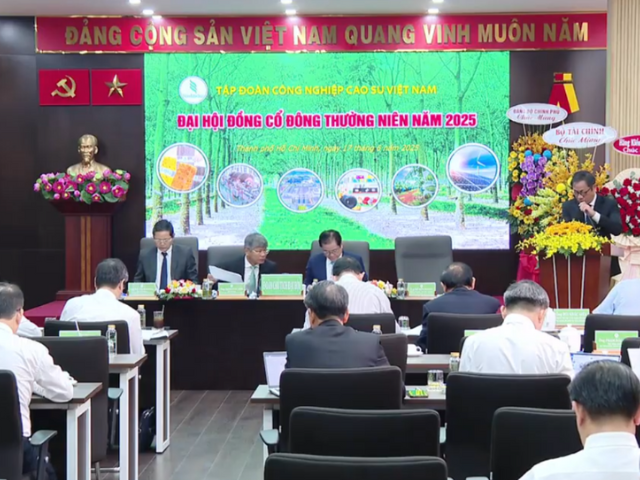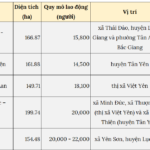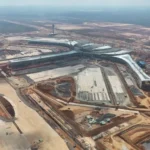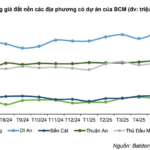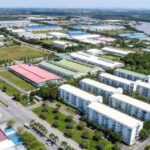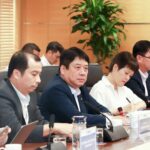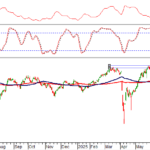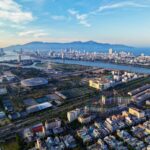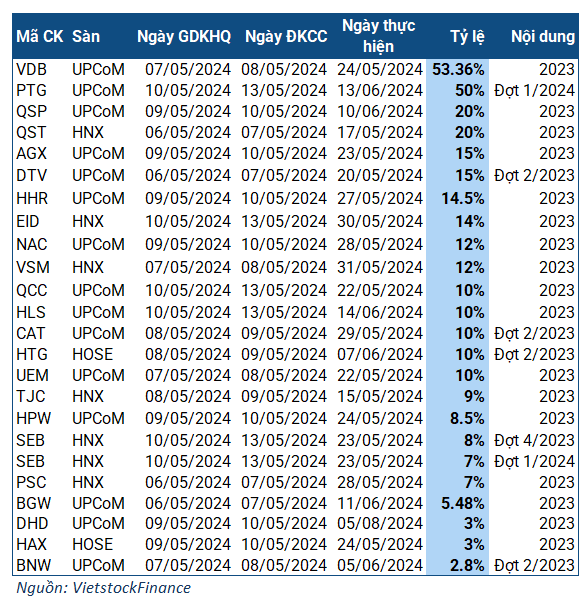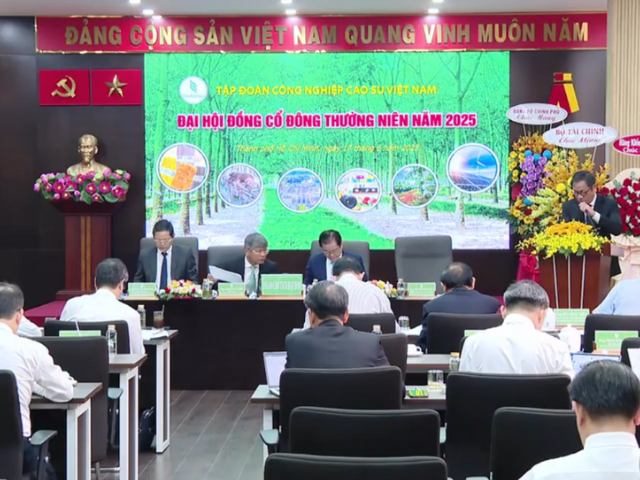
GVR’s 2025 Annual General Meeting took place on the morning of June 17th. Source: Screenshot
|
The Rubber Industry Enters a New Cycle
At the 2025 Annual General Meeting held on June 17th, Mr. Truong Minh Trung, Deputy General Director of GVR, shared that despite the challenges faced by the rubber industry due to geopolitical factors and new US tax policies, in the long run, the imbalance between supply and demand for natural rubber will continue at least until 2028.
Mr. Trung pointed out that the current difficulties arise from price reductions by Chinese manufacturers, increased transportation costs due to supply chain disruptions, and US import tax policies. However, according to him, these factors are not new, and their impact is mainly short-term.
Especially, the new US tax rate only directly affects about 8% of Vietnam’s rubber exports to this market, but it indirectly affects the entire supply chain and market psychology.
The Deputy General Director informed that starting this year, the world rubber market has entered a phase of shortage, with a supply-demand gap of about 800,000 tons, expected to increase to 1 million tons in 2026 and possibly up to 2 million tons by 2028.
“If the gap is below 500,000 tons, the market is still considered stable. However, when it exceeds the 1 million-ton mark, rubber prices tend to be significantly affected,” he emphasized.
While acknowledging that the market is still volatile in the short term, Mr. Trung assessed that the psychology has gradually stabilized thanks to positive signals from trade negotiations between the US and its partners.
In the first half of 2025, GVR’s average selling price reached nearly VND 52 million/ton, currently fluctuating around VND 50 million/ton. For the whole year, the average price is expected to reach VND 45-47 million/ton, higher than the average of VND 43 million/ton in 2024.
“Rubber prices this year will definitely not be lower than last year,” Mr. Trung affirmed.
Registration for 7,500ha of New Industrial Parks
Besides the rubber sector, GVR is focusing on developing two strategic fields: industrial parks and renewable energy.
Mr. Do Huu Phuoc, Permanent Deputy General Director, shared that the Group is implementing a model of green industrial parks that are environmentally friendly and integrated with renewable energy use. So far, GVR has been approved for four major projects, including Hiep Thanh with 496ha in Tay Ninh, Rach Bap with 360ha in Binh Duong, Bac Dong Phu with 317ha, and Minh Hung with 484ha in Binh Phuoc.
To get ahead of the trend of production shifting to Vietnam, GVR continues to expand its area with about 7,500ha of new industrial parks in Dong Nai, Ba Ria – Vung Tau, Binh Duong, and Binh Phuoc provinces. The goal is to integrate industrial parks with clean energy sources to help customers achieve sustainable production certificates.
“With a current occupancy rate of 92% and the wave of factory relocation from high-tax regions to Vietnam, GVR will have a significant advantage in the coming years,” Mr. Phuoc stated. This will be the Group’s important growth pillar in the 2025-2030 period.
Over 33 Thousand Billion VND Investment in Renewable Energy by 2030
In the field of renewable energy, GVR is developing hydropower, pumped storage hydropower, and solar power projects, with a total registered capacity of up to 2,400MW in the coming time.
According to Mr. Phuoc, the Group is cooperating with EVN to implement a national-scale pumped storage hydropower project in Da Nang with a capacity of 1,200MW.
In addition, the company has also registered to invest in solar power projects such as Loc Thien with 395MW in Binh Phuoc, Long Tan with 600MW in Dau Tieng (Binh Duong), and two projects in Phu Yen with 155MW, along with floating solar power plants in Dak Sin (30MW) and Song Con.
Regarding hydropower, there is the Loc Nam project with 36MW in Lam Dong and the Song Nam – Song Bac project with 41MW in Da Nang. Besides collaborating with EVN, GVR will also coordinate with PVN to survey some other projects.
The total investment capital for the renewable energy sector in the 2026-2030 period is expected to be about VND 33.2 thousand billion.

Mr. Do Huu Phuoc answers shareholders’ questions. Source: Screenshot
|
Expanding Rubber Planting Area in Laos and Cambodia
Facing the reality of shrinking domestic land funds due to infrastructure projects, GVR plans to expand 70,000ha of rubber plantations in Laos and Cambodia to ensure stable production of 500,000 – 600,000 tons per year in the period of 2026-2030.
Specifically, the Group plans to plant an additional 30,000ha in Laos and 40,000ha in Cambodia. These plans are currently being evaluated and surveyed by local authorities.
At the same time, GVR also promotes wood processing activities from rubber clearance areas, with about 10,000ha exploited each year, supplying 16 wood processing factories with an average output of more than 1.1 million m3/year.
In addition, the Group is developing high-tech agriculture on an area of 13,000ha in the Southeast and Central Highlands regions, creating added value of VND 40-50 million/ha, which is superior to the traditional rubber planting model.
Besides the above fields, GVR also plans to invest in social housing in the next five years.
Aiming to Commercialize Carbon Credits from 2025
Another important strategic orientation is green growth. The Group sets the goal of commercializing carbon credits as early as this year.
Currently, GVR is piloting the sale of carbon credits in projects in Laos and Cambodia, with official implementation planned for this year or 2026.
The Group currently manages over 279,000ha of rubber plantations, with the ability to sequester about 55 million tons of CO2 throughout the 15-year exploitation life cycle. With international carbon credit prices ranging from $5 to $20/ton of CO2, successful commercialization will provide a significant additional source of revenue for GVR.
More than 140,000ha of the Group’s rubber plantations have achieved PEFC certification for sustainable forest management. The goal is that within the next two years, the entire area, including those in Laos and Cambodia, will meet this standard. In parallel, GVR is also working to regain FSC certification from 2026.
First Half Performance Reaches Nearly 50% of the Year Plan
According to the 2025 plan, the Group sets a target of VND 31.4 thousand billion in consolidated revenue, up 8% over the previous year and the highest ever. Expected after-tax profit is about VND 5 thousand billion, the highest in the last 4 years. The planned dividend is 4% of charter capital.
In the rubber sector alone, GVR strives to exploit 485,000 tons and purchase an additional 100,000 tons. In the first half of the year, the company is estimated to have achieved 46% of the revenue plan and 43% of the profit target. This result is considered “higher than usual.”
To achieve the full-year target, GVR sets the direction to increase rubber output by more than 7%, while reducing costs by at least 5% and restructuring the organization from 3 levels to 2 levels.
In addition, the Group is applying crop data management technology on the GIS platform to optimize costs and improve governance effectiveness.
Notably, GVR is also restructuring its investment portfolio and divesting from non-core areas to focus resources on developing three main sectors: rubber, industrial parks, and renewable energy.
At the meeting, shareholders approved the resignation of Mr. Tran Ngoc Thuan from the position of Member of the Board of Directors for the term 2021 – 2026.
| GVR expects after-tax profit to be the highest in 4 years |
Tu Kinh
– 16:33 17/06/2025
The Industrial Hub of Bac Giang Welcomes a Host of New Industrial Parks
In the first five months of 2025, Bac Giang province took a significant step towards accelerating its industrial infrastructure development strategy for 2030 and its vision for 2050. The province approved construction plans for five new industrial parks, spanning nearly 833 hectares, at a ratio of 1/2000. This decisive move underscores Bac Giang’s commitment to fostering a robust industrial landscape, setting the stage for a thriving future.
Proposed Development of a Free Trade Zone at Long Thanh Airport
The province of Dong Nai and the Vietnam Airports Corporation have joined forces to present a unified proposal to the Government for the development of a free trade zone encompassing the Long Thanh International Airport and its surrounding areas.
The Birth of a Mega-Metropolis: How the Merger of Ho Chi Minh City, Binh Duong, and Ba Ria-Vung Tau Creates a Powerhouse Benefitting the Industrial Park Baron of Binh Duong
“The proposed merger of Binh Duong, Ba Ria-Vung Tau, and Ho Chi Minh City is expected to provide a significant boost to the recovery of the Binh Duong real estate market, according to VCBS. This strategic move is anticipated to create a ripple effect, revitalizing the region’s property sector and presenting lucrative opportunities for investors and developers alike.”
The Power of Partnership: EVN’s Strategic Alliance with a Chinese Giant – Unlocking New Possibilities for Vietnam’s Energy Sector
The two parties delved into an insightful discussion, exploring innovative strategies to accelerate digital transformation in the operation and development of a modern power grid.


























